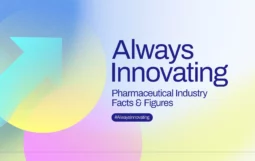Statement on PABS Instrument at the third meeting of the open-ended Intergovernmental Working Group (IGWG 3) on the WHO Pandemic Agreement
On 3 November 2025 in Geneva, IFPMA delivered a statement at at the third meeting of the open-ended Intergovernmental Working Group (IGWG 3) on the WHO Pandemic Agreement.
The hard-won consensus in the Pandemic Agreement comes at a pivotal moment for global health cooperation. The priority must now be to ensure the Agreement Annex defines effective implementation mechanisms which realize the key objectives set out in the Agreement, namely “to strengthen, facilitate and accelerate research and innovation, as well as the fair and equitable sharing and distribution of benefits” and avoid reopening already agreed principles”.
In defining the PABS Instrument, we need to focus on pandemics and learn from what worked well and what did not in previous experiences. The Bureau’s current proposal risks undermining this goal, by weakening critical frameworks and introducing barriers to the R&D necessary to strengthen the pipelines of vaccines and therapeutics that will determine our ability to respond to future pandemics. It introduces overly broad definitions that could capture pathogens with no real pandemic potential and mandatory financial contributions that will disincentivize participation. It also fails to ensure national ABS laws will not apply to PABS, leading to potential stacking of obligations and legal uncertainty, as well as harming critical innovation by making broad restrictions on intellectual property.
These provisions not only fall short of offering practical solutions to improve equitable access, they actively threaten the mechanisms that enabled industry to rapidly develop and scale-up delivery of effective products during the last pandemic.
Industry is committed to contributing meaningfully to pandemic preparedness and response and has outlined a set of Equitable Access Commitments, building on the Berlin Declaration. The most valuable contribution that the industry can make is to work with partners to build a pipeline of products that will be ready as fast as possible to respond to the next pandemics. Currently, there are few vaccines and therapeutics in development against the pathogens of highest risk of causing a future pandemic – several such pathogens have no therapeutics and/or vaccines in development at all currently. If we do not stimulate such a pipeline, there will not be any benefits to share next time.
We support that PABS be shaped as a broad multistakeholder partnership to which companies can voluntarily associate through their adoption of a range of equitable access tools, which would be flexible and enforceable through individual contracts.
Companies could independently adopt equitable access tools based on what each company could best contribute in view of its circumstances, such as its size, location, technology platform, research and development pipeline, or manufacturing capabilities. Critically, the PABS system must have definitions and a scope that make such tools workable in practice. We encourage you to visit the IFPMA website for a full list of such tools that can be deployed by companies, and the enablers which underpin these. They include:
- Strengthening the Innovation Base
Invest in basic and applied R&D on vaccines and therapeutics for pathogens of pandemic potential, including through the use of novel technologies such as artificial intelligence, supercomputing, and robotics. Maintain adaptable platform technologies that can be rapidly deployed in response to new threats. Expand geographically diverse clinical trial networks to ensure products are tested in representative populations, including in underserved regions. - Facilitating Equitable Access During a Pandemic
Reserve a meaningful share of real-time production for relevant countermeasures for equitable distribution based on public-health risks and needs, including donations and equity-based tiered-pricing approaches. Scale up production and distribution through globally distributed facilities. Ensure continuity of supply for repurposed medicines. Make molecule libraries available to third parties on fair conditions for pandemic-relevant research and development. - Enhancing Manufacturing and Supply Capabilities
Develop and scale up manufacturing and distribution capacity for relevant countermeasures, including through voluntary partnerships, technology-transfer agreements, or supply arrangements that support geographically distributed production and fill-finish capabilities. Strengthen supply-chain resilience by improving access to raw materials, active pharmaceutical ingredients, and consumables needed for rapid response. - Supporting Health-System and Regulatory Preparedness
Provide financial and technical support for capacity-building in areas such as disease surveillance, clinical-trial infrastructure, regulatory systems, and health-workforce development. Collaborate with WHO and other partners to strengthen treatment guidelines and optimize the delivery and administration of relevant countermeasures.
The forthcoming PABS Annex will be a critical test of the WHO Pandemic Agreement’s ability to deliver on its promise of strengthened pandemic preparedness. The objective is not to create new mechanisms for their own sake, but proactively help advance science, mobilize actors, and expand equitable access, including by making the set of access tools described above possible, but only if it:
- Ensures scope is focused on pathogens with pandemic potential
- Enables free and unhindered access to pathogens
- Maintains flexibility in how access commitments are implemented taking into account companies various capacities and technologies
- Avoids legal complexity and stacking of obligations
- Enables inclusive governance including industry, as part of a broad multi-stakeholder partnership.
The successful implementation of the WHO Pandemic Agreement hinges on whether the PABS Annex is agreed such that it enables – not obstructs – science, partnership, and access. Industry stands ready to contribute but within a system designed to truly strengthen Pandemic Preparedness and Response.


